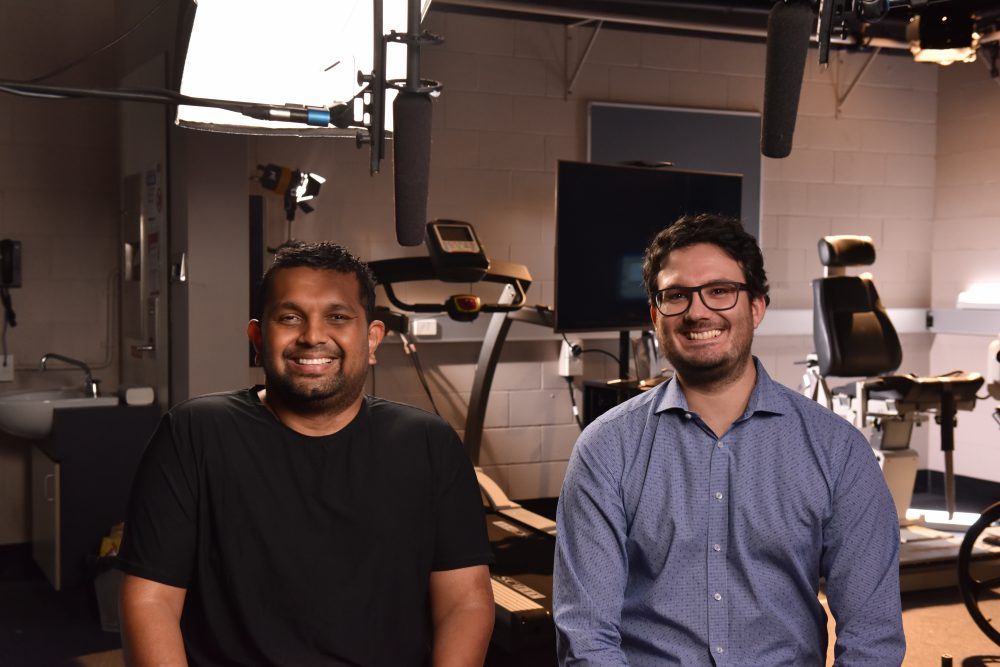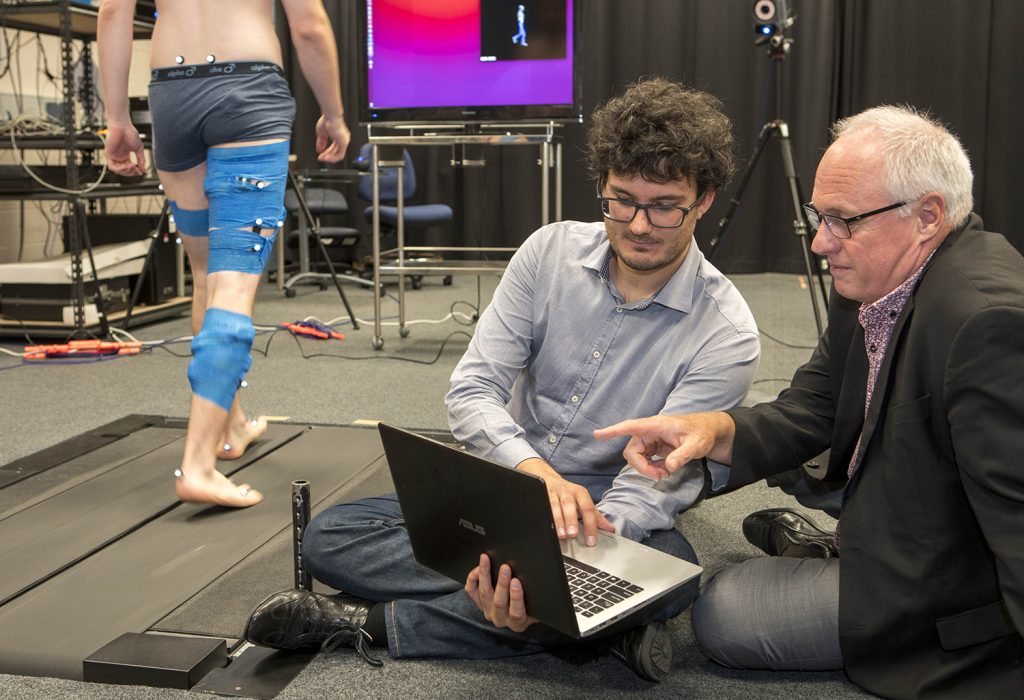
Dr Claudio Pizzalato was a Masters student at Italy’s prestigious University of Padua, when the chance to continue investigating ground-breaking personalised neuromusculoskeletal models lured him to Griffith University in 2012 to work under internationally-renowned biomechanical engineer Professor David Lloyd.
What followed was an ambitious thesis project to complete his PhD in 2016 – “Real-Time Estimation of Lower Limb Musculoskeletal Tissue Loading Using an Electromyogram-Informed Neuromusculoskeletal Model”. Dr Pizzalato had demonstrated how to understand muscle weakness or damage by measuring the nerve signals from the brain that make muscles move, in real-time, in order to design personalised training, treatment and rehabilitation.
He won the Australian and New Zealand Society of Biomechanics Publication of the Year award 2015, and the Young Investigator Award at the 2016 Australasian Biomechanics Conference.
Dr Pizzalato continued on as a post-doc working on an Australian Research Council (ARC) linkage project as part of Professor Lloyd’s dynamic local and international team of collaborators, enjoying life on the Gold Coast and setting his sights towards curative treatments for spinal cord injury and other neuromusculoskeletal conditions.

Dynamic duo work towards spinal injury cure
Before they became colleagues and friends, Dr Pizzalato and Dr Dinesh Palipana, Queensland’s first quadriplegic medical doctor, were actually next-door neighbours on the Gold Coast.
In 2018 the paired up to pursue what Dr Palipana calls his ‘dirty little secret’, a spinal cord injury cure for himself and breakthrough treatments that would provide increased range of movement for paralysed patients.
Having understood the opportunity to electrically stimulate muscle movement with personalised muscle activation patterns in real-time, the duo and colleagues turned their attention to capturing brain signals via an EEG (electroencephalogram).
The Personalised Digital Twin model sits in between to connect the ‘top-down’ neural data from the brain – Dinesh thinking about riding an assistive rehabilitation bike – with the ‘bottom-up’ feedback from muscle stimulation as he rides the bike.
Dr Pizzolato says digital twins give an inside view of a patient’s body to better understand what’s going on during rehabilitation.
“We can interrogate the digital twin to figure out how to best activate muscles to achieve the rehabilitation,” he says. “Personalisation in this context is essential.”
While digital twins are not new, the ADaPT (Advanced Design and Prototyping Technologies) research team’s approach is unique because of the real-time analysis of movements in the spinal cord patient. It’s a process that Dr Pizzolato says saves time and leads to customised treatment including highly targeted surgery.
“Most of the treatment out there for spinal cord injury is very generic,” he says.
“You can’t treat everyone the same and the most important part of personalisation is being able to adapt to the increasing capabilities of the person being rehabilitated.”
“This is an enabling technology that can put Australia at the cutting edge of designing implants and wearable devices,” Professor Lloyd says.
“ADaPT and the personalised digital twin technology is getting a lot of international attention from biomedical device companies, which is really important to bring that investment into the region and into Australia.
“It’s also attracting Research Fellows and PhD students who want to come to Griffith University and the Health and Knowledge Precinct, and study in that environment.”
Dr Pizzolato won the Queensland Fresh Scientist of the Year Judges Award 2018.
[…] 2018 Fresh Science Judges Award winner Dr Claudio Pizzalato, now a Senior Research Fellow, is making strides in co-leading the novel BioSpine spinal injury […]